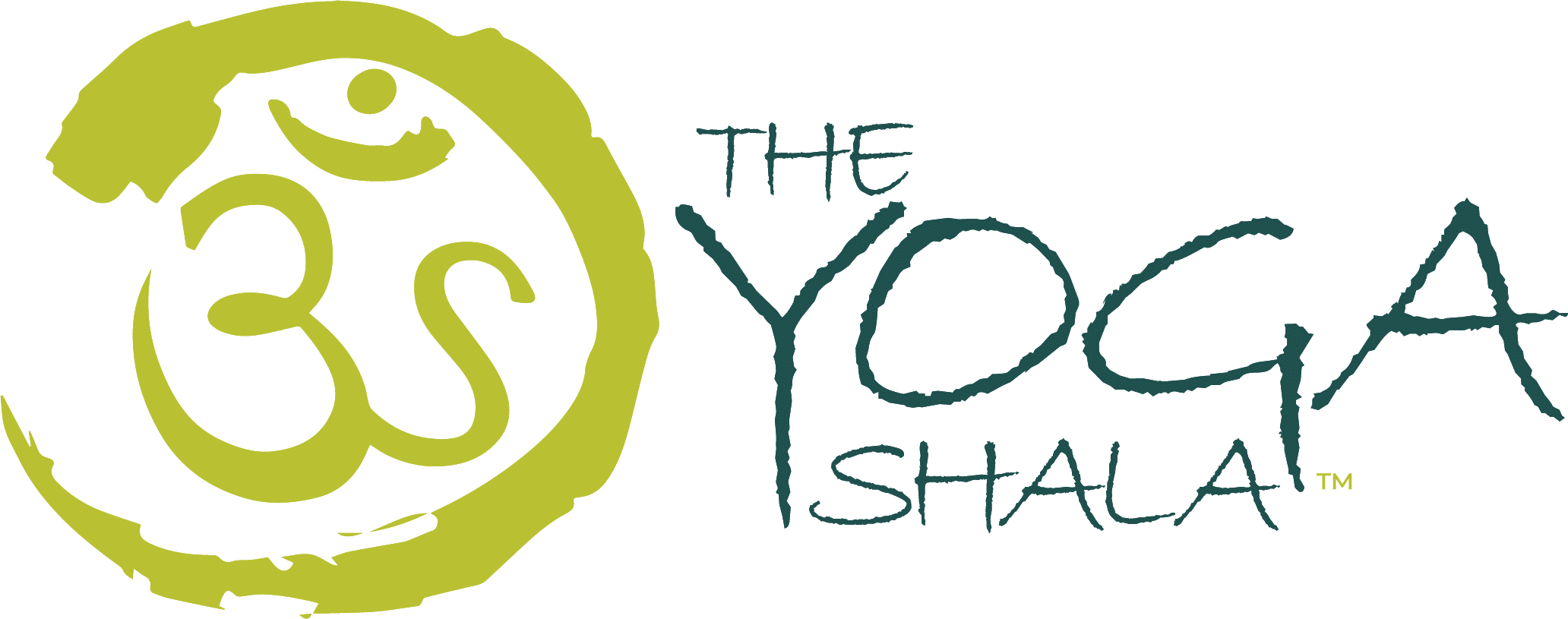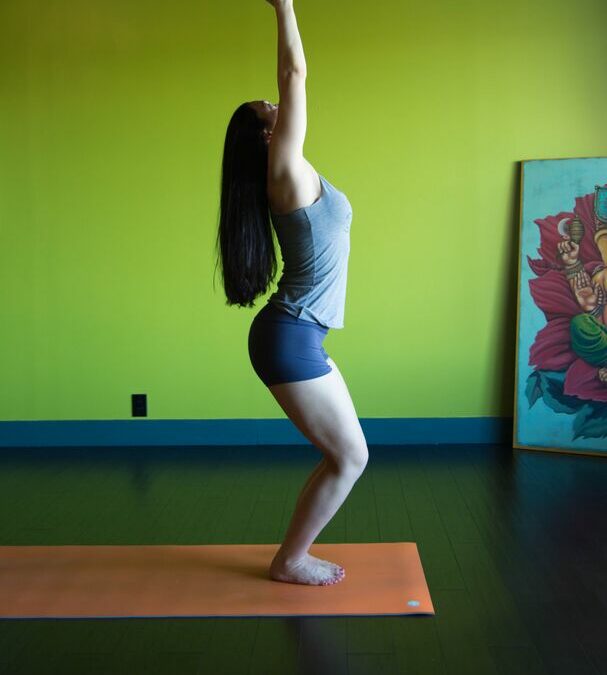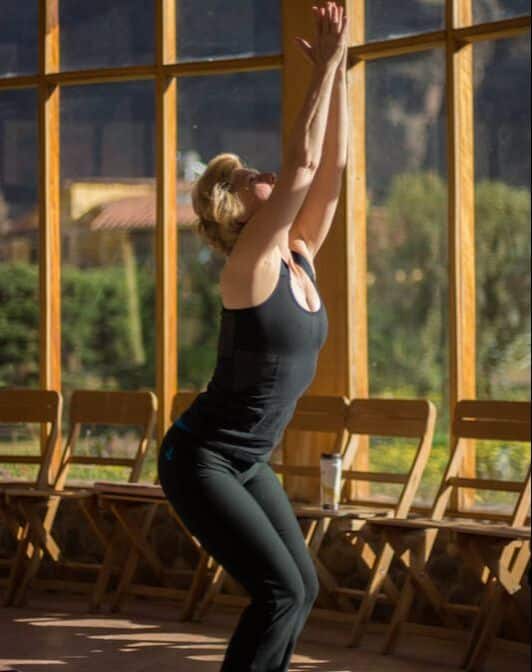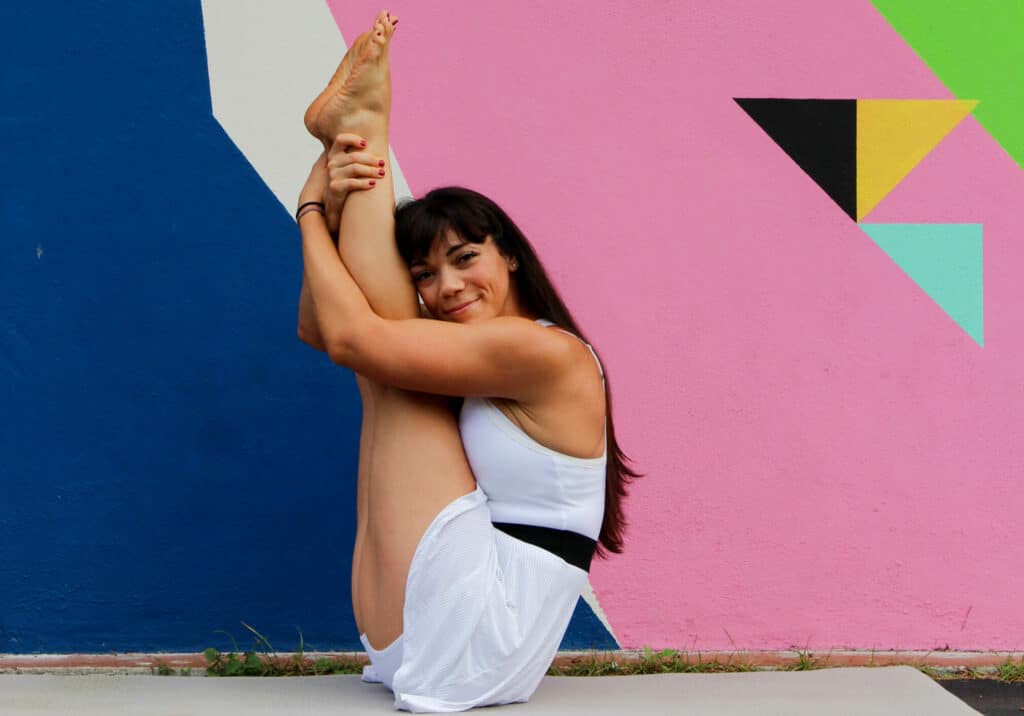Benefits of Utkatasana (Chair Pose):
Strengthens Lower Body
Utkatasana primarily targets the muscles of the lower body, including the quadriceps, hamstrings, calves, and glutes. This strengthens these muscles, improving overall stability and support.
Enhances Balance
The pose challenges your balance as you maintain the seated position, improving proprioception and coordination.
Tones Core Muscles
Engaging your core muscles in Utkatasana helps to stabilize your spine and supports better posture.
Opens Chest and Shoulders
The raised arms and expanded chest in this pose encourage better lung capacity and enhance flexibility in the chest and shoulders.
Stimulates Digestion
The compression of the abdominal region in Utkatasana massages the digestive organs, aiding digestion and metabolism.
Energizes the Body
Holding the pose requires strength and effort, which increases blood flow and invigorates the body.
Builds Mental Focus
Utkatasana demands concentration and mental engagement, fostering mindfulness and mental clarity.
Prepares for Other Poses
This pose serves as a foundational pose that prepares the body for more challenging asanas in the Ashtanga Yoga sequence.
Tap here to watch a step-by-step tutorial video of Utkatasana
Contraindications and Cautions
While Utkatasana offers a range of benefits, it may not be suitable for everyone. Here are some contraindications and precautions to consider:
Knee Issues:
If you have knee injuries or chronic knee pain, approach Utkatasana with caution. Avoid deep bending and practice with modifications or under the guidance of a qualified instructor.
Lower Back Pain:
Individuals with lower back issues should be mindful of their alignment in this pose. Engage your core to protect the lower back and avoid over-arching.
Ankle or Hip Problems:
People with ankle or hip injuries should practice with care, avoiding excessive strain on these areas.
High Blood Pressure:
If you have high blood pressure, be cautious with the breath retention (holding the breath) that may occur during the pose. Focus on a steady, controlled breath.
Pregnancy:
Expectant mothers should modify Utkatasana to avoid pressure on the abdomen and the potential risk of falling. To take the posture safely, step your feet hip distance apart before raising your arms overhead.
Insomnia or Headaches:
For those dealing with insomnia or headaches, avoid excessive strain and pressure on the head and neck.
Heart Conditions:
If you have heart conditions, approach Utkatasana cautiously. Focus on proper breath control and avoid straining excessively.
Always listen to your body and practice within your limits. If you’re new to yoga or have any underlying health concerns, it’s recommended to consult a healthcare professional or a qualified yoga instructor before attempting Utkatasana or any other yoga pose. With proper alignment and awareness, Utkatasana can become a valuable addition to your yoga practice, promoting both physical strength and mental clarity.
Tap here to watch a step-by-step tutorial video of Utkatasana.
Step by Step Instructions for taking Utkatasana or Chair Pose:
In the Ashtanga yoga standing sequence, we take Utkatasana after we have taken Ardha Baddha Padmottanasana. Once you exit Ardha Baddha Padmottanasana and vinyasa, you will begin the Vinyasa count for Utkatasana from Downward facing dog (Adho Mukha Shvanasana).
Sapta – from down dog, look forward and inhale as you jump your feet to your hands, bend your knees and raise your arms.
Take five deep breaths
Look to your fingers, hastagrai drishti
Ashtau – Exhale, bring your hands to the floor next to your feet and still looking forward, jump your feet back into Chaturanga Dandasana. From there you will complete your vinyasa and prepare to take Virabhadra (Warrior).
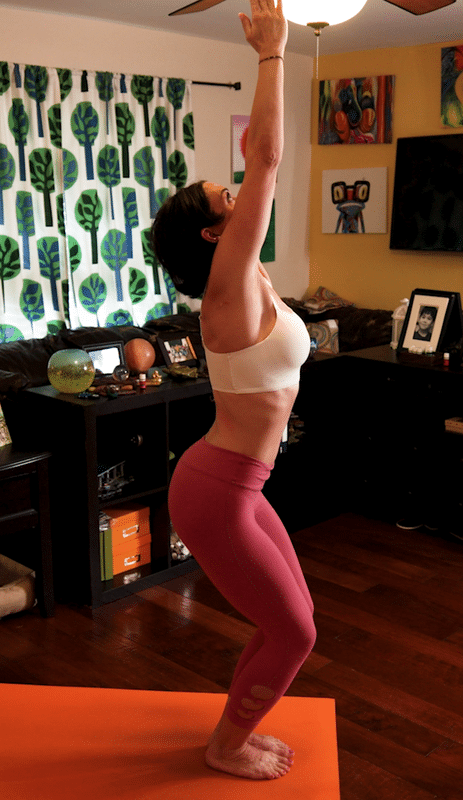
Modifications:
Modifications for Utkatasana (Chair Pose) can be helpful for individuals with varying levels of flexibility, strength, or specific physical limitations. These modifications ensure that you can still experience the benefits of the pose while adapting it to your body’s needs. Here are some modifications for Utkatasana:
Hands at Heart Center:
Instead of raising your arms overhead, keep your hands at heart center in Anjali Mudra (prayer position). This variation reduces shoulder strain while still engaging your core and lower body.
Shallower Bend:
Start by bending your knees just slightly. This will decrease the intensity of the pose, making it more accessible, especially if you have knee or lower back concerns.
Using a Wall:
Stand with your back against a wall and lower yourself into the chair pose while sliding down the wall. This provides support and helps maintain proper alignment.
Wide Stance:
Start this posture in a wider stance than usual. From hip distance, step out a little further. This can help decrease pressure on the knees and make the pose more accessible.
Remember that modifications are meant to support your practice and make poses accessible. It’s always recommended to practice under the guidance of a knowledgeable yoga instructor, especially if you’re dealing with specific limitations or injuries. By choosing the right modification, you can comfortably incorporate Utkatasana into your practice and gradually progress as your strength and flexibility improve.
Practice with The Yoga Shala
If you want to join us for LIVE classes, The Yoga Shala offers virtual and in person classes every weekday morning. We are located at 140 Circle Drive, #4, Maitland, Florida. Owner, Krista Shirley, also offers virtual or in person private sessions (Yoga, Meditation, Breath-work, Nutrition, Life Coaching and Mentorship). Visit theyogashala.com for details.
Be sure to signup for our newsletter to stay on top of local events and classes, Nysa products sales, new offerings, new products and more!
We hope you find this video series helpful to you in creating or maintaining your yoga practice!
About Krista
If you want to join Krista in person she teaches daily classes at The Yoga Shala in Maitland, Florida. She also offers virtual sessions in Yoga, Meditation, Breath-work, Nutrition, Life Coaching and Mentorship. Check out www.theyogashala.com for more details.
If you do not live in Central Florida and want to find an authorized teacher in your area, check out our teacher, Sharath Jois’ website, for a list of all teachers authorized and certified by his yoga centre in India.
|
|
|
|
|
|
|
|
|
|
|
|
|
|
|
|
❤️SHOP MERCHANDISE: Nysa Products
❤️LET’S BE SOCIAL:
Instagram: Krista Shirley Yoga
Instagram: The Yoga Shala
Facebook: The Yoga Shala
Facebook: KristaShirleyYoga
For other inquires please contact: [email protected]
